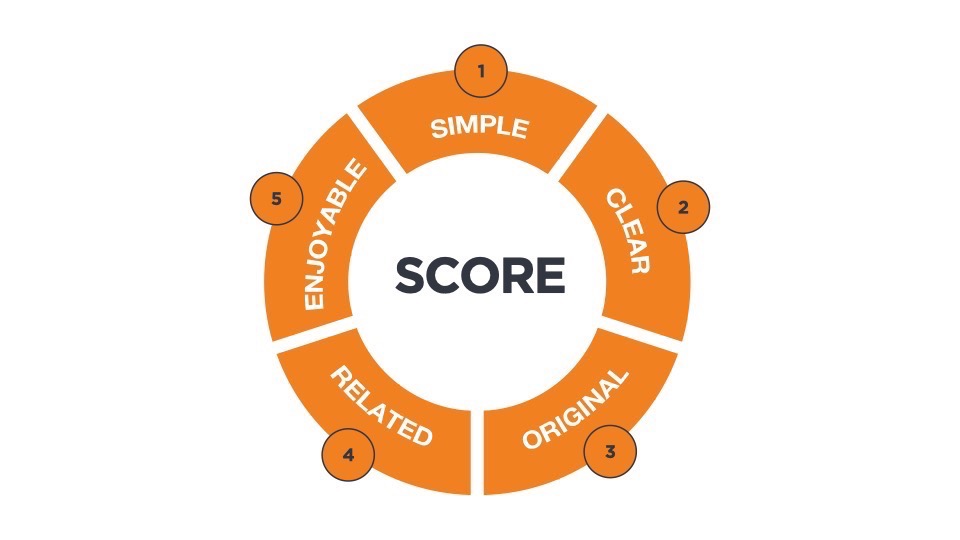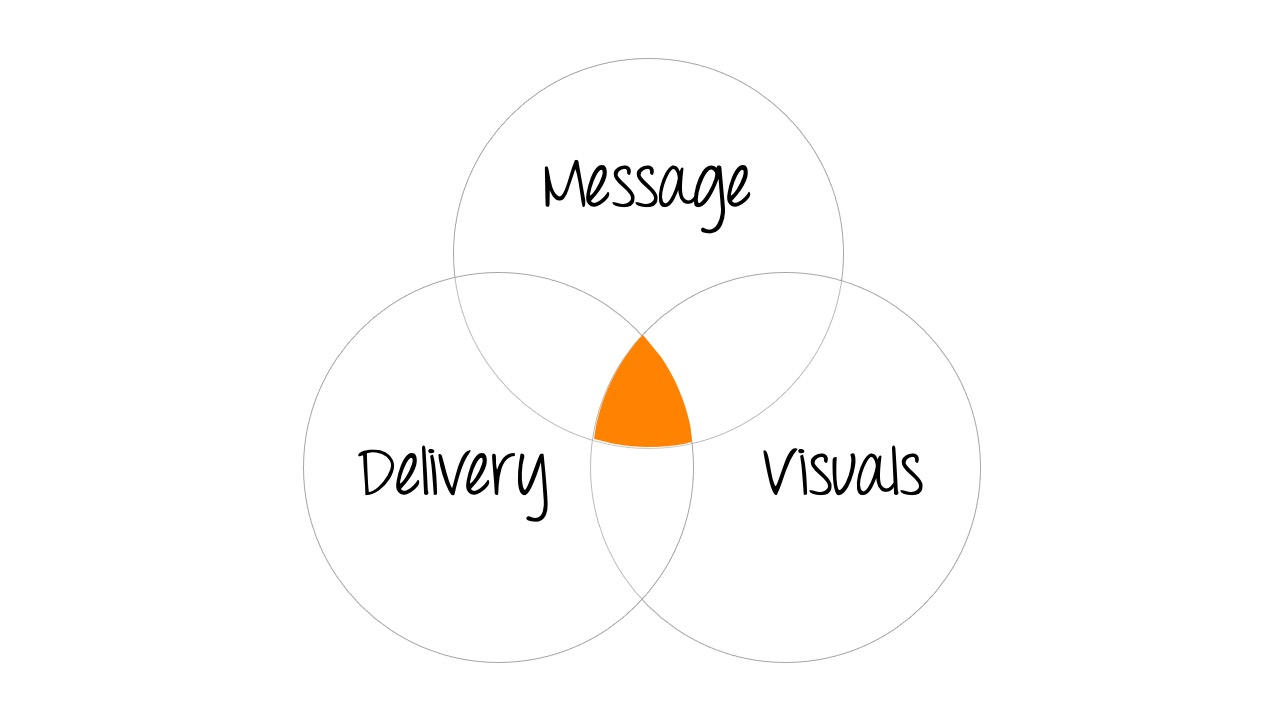Most business leaders fail to follow set principles for creating and delivering their presentations. In not doing so they are making a fundamental mistake.
Some think it’s primarily about creating slides on PowerPoint. They think if they get a decent deck together then they are good to go.
If you are one of those people who spend most of your preparation time working on PowerPoint slides (or any other presentation tool), you’ve missed the point. There is so much more to focus on than PowerPoint.
What is far more important is your ability to pitch, present and communicate your ideas so you can achieve your objectives. The aim might be to win more deals, make more sales, inspire and motivate your team, increase your credibility or reputation — or make progress in your career.
Think about it. There are so many other areas of life which require us to follow some clear principles — and we would never think to do otherwise.
If you wanted to learn how to play a new musical instrument, you would spend time working on fingering or breathing and learning scales.
To master a new sport you would need to know the rules of the game and the basic techniques. For racket sports and golf, for example, you would work on your swing. All of that is more important than having the latest equipment.
Why is it that if we want to learn or get better at presenting, we ignore the fundamental principles of communication?
Those who ignore the fundamental principles will continue to deliver presentations that waste their own time and that of the audience. Plus, there will be no desired action from the audience and the objectives will not be achieved.
Principles First; PowerPoint Last
If you want your audience to take action and you want to use presentations to gain a competitive advantage in your business, you have to accept there are fundamental principles to follow. A presentation is so much more than PowerPoint.
Focusing on the tool (PowerPoint) rather than the principles is like worrying about your mic before learning how to sing.
Jeff Bezos once said that he is often asked what will change in the next ten years, but rarely what is not going to change in the next ten years. He believes that it is the second question which is more important — and advises people to ‘focus on the things that don’t change.’
In the case of Amazon, Bezos realised that people will always want low prices, fast delivery and vast selection. There is a business opportunity in embracing what you know will remain constant.
With presentations we should take heed of Jeff Bezos’s observation and also focus on the things that don’t change. The tools and technology we use to communicate our ideas will change. Presentation software, like PowerPoint, will continue to advance. However, the fundamental principles of good presentations will never change.
No one is going to come up to you in ten years’ time and say, “Great presentation, I just wish it was more complex / I wish it was much longer / I wish the structure wasn’t that clear / I wish it wasn’t so relevant to me and my needs / I just wish it was more boring.”
If you follow the right principles consistently, you will become the presenter everyone remembers. Your presentations will give you a competitive advantage which will allow you to achieve your personal and professional objectives.
The Five Key Principles
There are five principles for powerful presentations. Remember the word SCORE. Just like in football you want to SCORE when you give a presentation:

SIMPLE: The more you say, the less they remember, so keep it short, simple and to the point.
CLEAR: Your objectives and key messages should be obvious to everybody — including you.
ORIGINAL: Make your presentation stand out, and people will remember it for longer.
RELATED: Think about your audience and relate everything back to them. Think of it as the audience’s presentation. Make it relevant and useful for your audience.
ENJOYABLE: If the audience enjoys your talk, they will pay more attention, remember more and take action.
The magic happens when you apply these five principles to each of the three key arts of presenting. The three arts are:
- Your message: what you say
- Your delivery: how you say it
- Your visuals: what you show when you say it

Each of these (Message, Visuals and Delivery) can and should meet the five principles so that your presentations will be Simple, Clear, Original, Related and Enjoyable from any perspective.
If one of these three key elements is missing, you will find it hard to achieve your goals for the presentation. Think about how movies are put together. Any successful movie has a great plot (which is like the message), superb acting (which is the delivery) and stunning special effects or beautiful cinematography (the visuals). A movie which is lacking any of those elements will not be as enjoyable. The same is true for a presentation.
I previously worked with Bryan MacMillan, the Founder and CEO of TyreRunner.com, which is a price comparison site for car tyres.
Although Bryan is a naturally confident guy, being from a technical background, he had a tendency to be too detailed in his presentations. He admitted that he tended to jump straight into PowerPoint. When he delivered his presentations he often found that he was losing the audience’s interest.
He wanted to learn how to deliver an interactive presentation which would stand out, generate interest in his business and open the doors to new opportunities.
We helped Bryan to learn how to adopt a framework to put together a presentation which focused on his audience. He quickly realised that he needed to spend more time on idea creation and then editing down what he wanted to say.
Bryan’s feedback was that he felt far more confident after sticking to a framework. He is now regularly delivering great presentations with great confidence, drawing on his toolbox which gives him consistency.
Seven Steps For Better Presentations
How do you apply all this in practice? For your next presentation, here are seven steps you need to follow to be better prepared. If you follow these your presentations will improve dramatically.
- Analyse your audience
Your presentations must relate to your audience. Before opening up PowerPoint or thinking about your key messages, ask yourself some questions about your audience. What are their needs? What is the context of the presentation?
- Define a clear objective
What do you want your audience to believe, feel or do after your presentation? Tailor your presentation accordingly.
- Brainstorm to identify your key messages
Forget about technology, go analogue: pen and paper, whiteboards, flipcharts.
- Simplify your message
Your message needs to be simple for the audience to understand. What is the key message your audience really needs to take away from your presentation? Write it down in a maximum of 70 words.
- Develop a clear storyline
Translate the ideas from the previous brainstorming session into a storyline that makes it easy for the audience to follow you and remember what you say.
- Make it original and enjoyable
Tell them stories. People remember examples and anecdotes far better than naked facts and figures.
- Rehearse
Rehearse a few times before the actual presentation and you’ll shine.
Follow these steps consistently and you will become the best presenter you can be.
Rooted In Science
A presentation is a mix of art and science. There has been lots of research into how an audience member’s brain works. Thanks to science we know something about how to keep an audiences’ attention and how to achieve high engagement and comprehension.
Science can tell us what works and what doesn’t when we communicate our ideas.
The principles outlined in this article are rooted in what science tells us.
If you want to delve more deeply into the science behind presenting, I interviewed Dr John Medina (author of Brain Rules) on the Ideas on Stage podcast.
Summary
If you are one of those business leaders who fires up PowerPoint as the starting point for a presentation, you are making a mistake.
You can produce a much better presentation by employing some key principles in your preparation which you stick to each time.
It is far better to start with just a pen and paper and really think about your audience and what message you want to get across.
There are five key principles for any great presentation which you can remember with the word SCORE — keep it SIMPLE, make your messages CLEAR, make it ORIGINAL, keep it RELATED to your audience and make sure it is ENJOYABLE for them.
Apply those five principles to the three key arts of presenting — the MESSAGE, the VISUALS and the DELIVERY.
Bring everything back to the audience and what you want to achieve, brainstorm good ideas, simplify everything down — and then rehearse.
Once you have a system in place, use it every time to make better presentations, and you will achieve your personal and business goals.
Feedback
If this article has helped you please get in touch to let me know. If you feel any colleagues or friends might also benefit from reading it, feel free to share the article.
If you want to become a more confident presenter, take the Confident Presenter Scorecard. Answer simple Yes/No questions, get an instant score plus suggestions for improvement. It takes less than 3 minutes. Once you complete the scorecard, you’ll receive a free pdf copy of my best-selling book Confident Presenter.